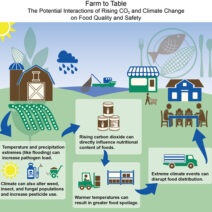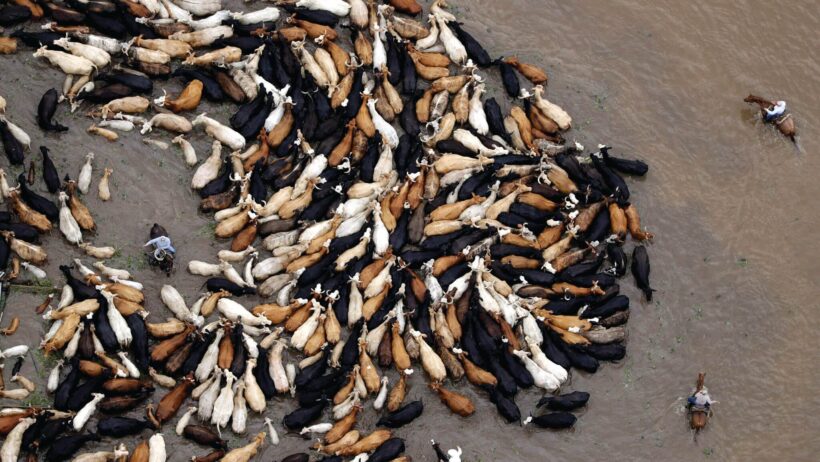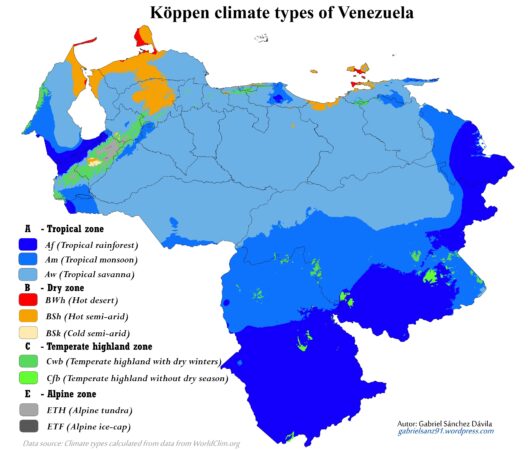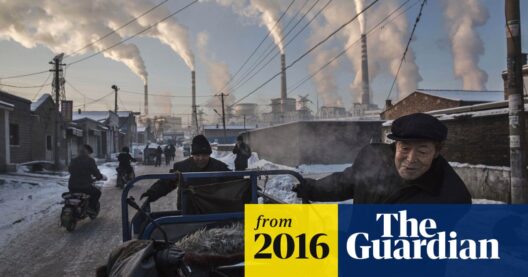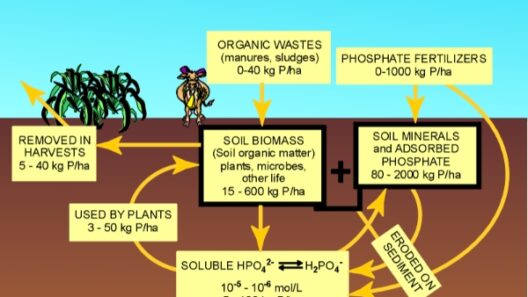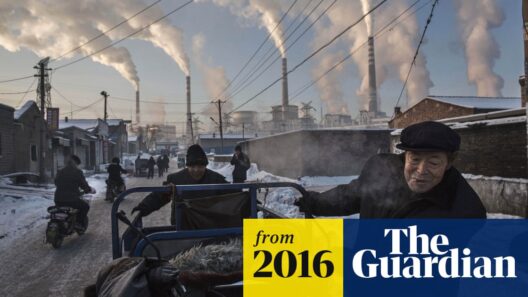As we delve into the intricate relationship between cattle farming, livestock, and global warming, one might ponder: can we sustainably enjoy our favorite beef burger while simultaneously protecting our planet? The challenge of reconciling our dietary preferences with environmental stewardship is not trivial. In this discussion, we will explore how livestock farming significantly contributes to climate change and what actionable steps we can undertake to mitigate its impact.
Cattle farming, a vital component of the global agricultural system, significantly impacts greenhouse gas emissions. Livestock, particularly cattle, generate methane—one of the most potent greenhouse gases. Methane is emitted during digestion, particularly through a process called enteric fermentation. This gas has a global warming potential 28 times greater than carbon dioxide over a century. The sheer scale of cattle farming exacerbates this issue; current estimates suggest that livestock production accounts for about 14.5% of all anthropogenic greenhouse gas emissions. This statistic prompts alarming questions about the sustainability of our meat-heavy diets.
Furthermore, the land use required for cattle farming is immense. Grazing pastures occupy roughly 26% of the Earth’s ice-free land. This extensive deforestation, along with the conversion of forested areas into grazing land and feed crop production, not only leads to habitat loss but also releases significant amounts of carbon dioxide stored in forests. The importance of protecting our forests cannot be overstated; they serve as critical carbon sinks, absorbing carbon dioxide from the atmosphere. The challenge lies in finding a balance between food production and the preservation of vital ecosystems.
Water usage in cattle farming also merits attention. The production of a single pound of beef demands approximately 1,800 gallons of water, encompassing the needs for animal hydration, feed production, and processing. This staggering number highlights the unsustainable nature of water consumption in traditional livestock farming. As freshwater resources become increasingly scarce in many regions, the question arises: Can we afford the luxury of meat consumption at such a high environmental cost?
In addition to greenhouse gas emissions and resource depletion, livestock farming contributes to soil degradation and erosion. Overgrazing can lead to a loss of vegetation cover, which plays a critical role in maintaining soil health. Healthy soils are essential for agriculture, acting as a natural filter for water and a habitat for countless organisms. When soil is compromised, it diminishes its ability to act as a carbon sink, further exacerbating climate change. This highlights yet another facet of the challenge we face: promoting sustainable agricultural practices that support both human needs and environmental integrity.
As we reflect on the implications of climate change wrought by livestock farming, there are notable solutions that merit discussion. Transitioning to more sustainable agricultural practices is paramount. Regenerative farming, which emphasizes soil health and ecosystem restoration, offers a promising alternative. By integrating livestock more harmoniously into farming systems, farmers can promote biodiversity, enhance soil fertility, and reduce methane emissions. The implementation of rotational grazing practices allows pastures to recover, fostering healthy ecosystems while simultaneously ensuring livestock remain productive.
Moreover, reducing meat consumption on an individual level can make a significant difference. Embracing a more plant-based diet does not require a complete abandonment of meat; rather, it can encourage moderation and diversity in our meals. A shift toward a more plant-centric diet minimizes the demand for resource-intensive livestock production, thereby relieving some of the pressure on the environment. Consumers can also support local, sustainable farming practices that prioritize animal welfare and ecosystem health, thus contributing to a reduced carbon footprint.
Education and awareness play crucial roles in addressing the challenges posed by cattle farming and livestock. By informing ourselves and others about the environmental impacts of our food choices, we can foster a culture of sustainability and responsibility. Community initiatives that promote local, sustainable farming can also enhance access to environmentally friendly food options, ultimately leading to broader societal shifts.
Technological advancements, such as methane-reducing feed additives and innovations in agricultural practices, can further mitigate the environmental impact of livestock farming. Researchers and farmers are developing strategies to lessen methane emissions from cattle, including supplements rich in seaweed and specialized feeding regimens that improve digestion. Investment in research and development is essential to unlock the potential of these solutions, illustrating how innovation can help bridge the gap between agriculture and environmental sustainability.
In confronting the challenge of climate change fueled by livestock farming, a collaborative effort is required. Governments, businesses, and individuals must come together to forge a sustainable path forward. Policy incentives supporting regenerative agriculture practices and plant-based diets can pave the way for transformative change. Through concerted action and engagement, we can rewrite the narrative concerning livestock and climate change.
Ultimately, we have the ability to reshape our relationship with food and the environment. By asking ourselves challenging questions and embracing innovative solutions, we can work towards a future where cattle farming and livestock coexist sustainably with a healthy planet. The path may be arduous, but the consequences of inaction are far more daunting. The time to act is now, and every small effort can contribute to the larger tapestry of environmental stewardship.
